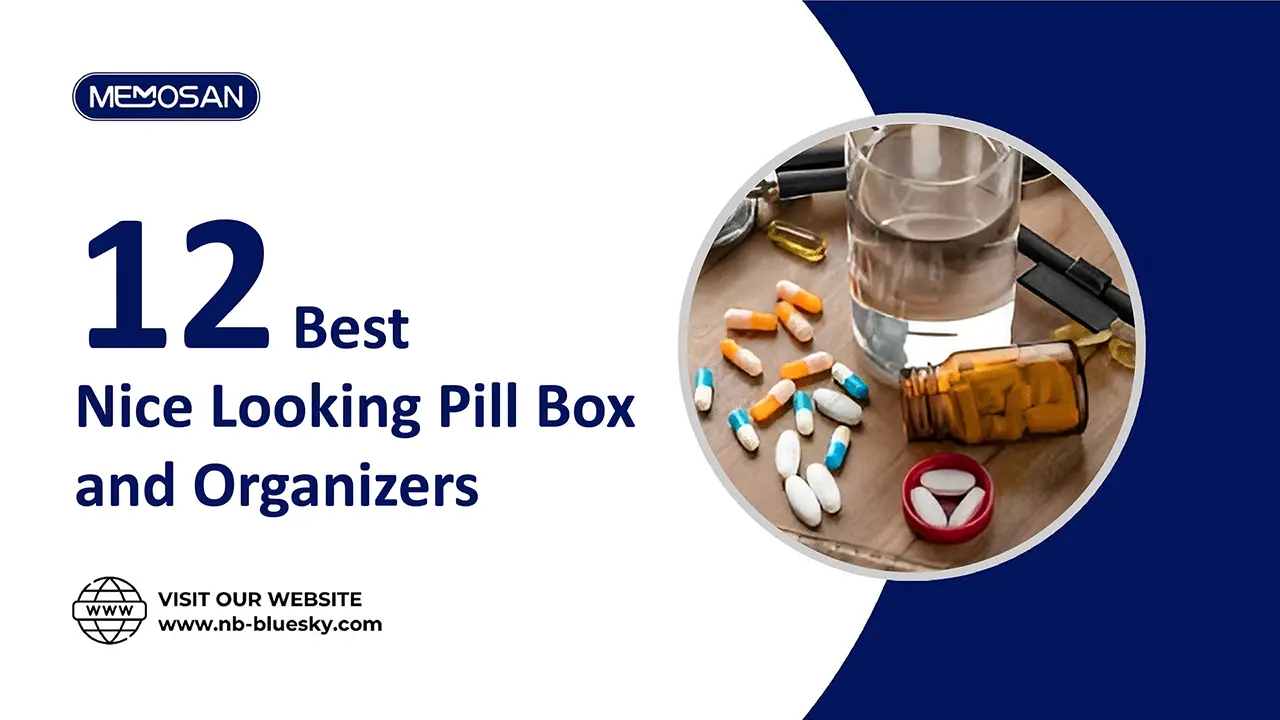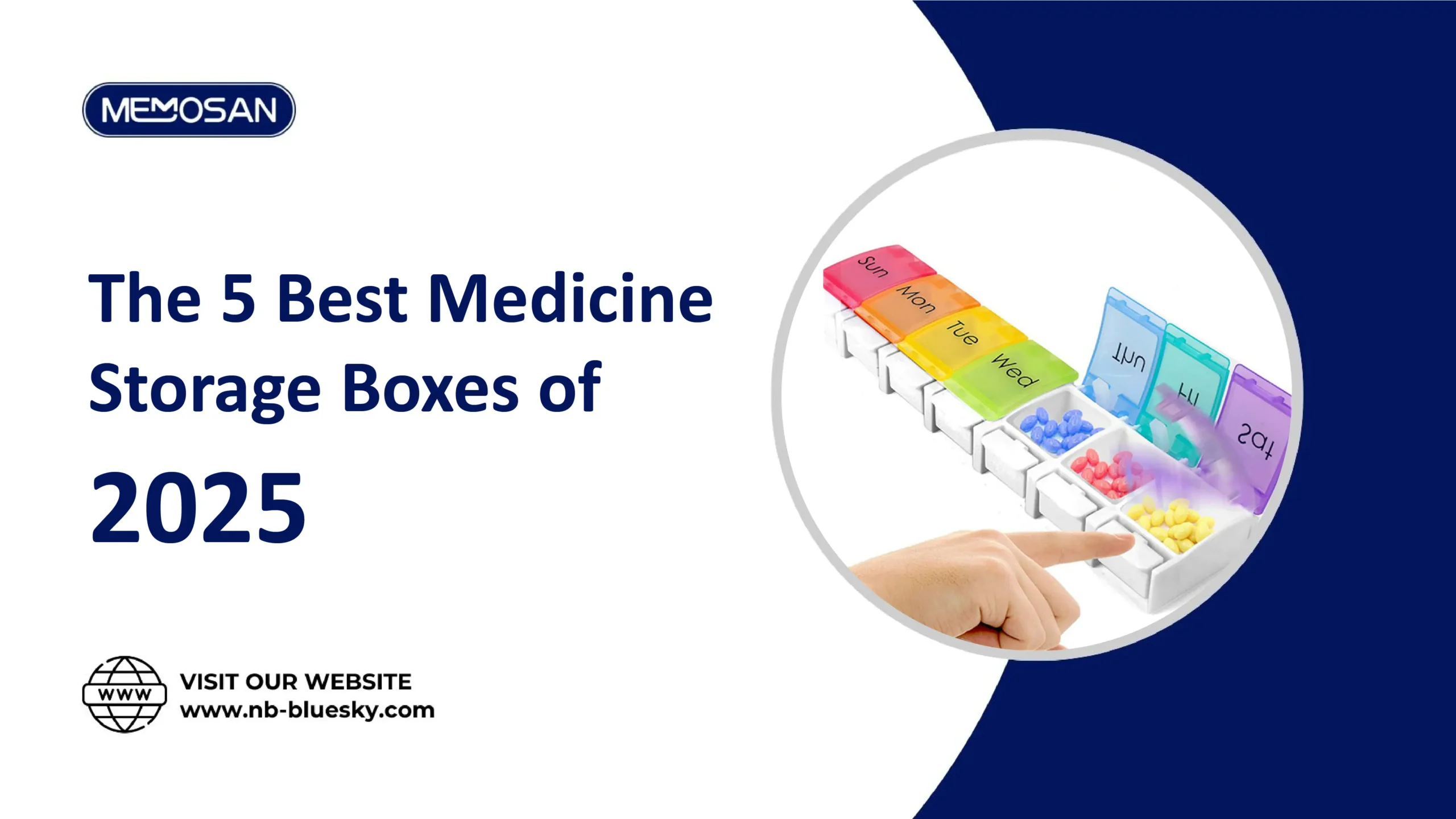Plastic pill containers are standard in many homes. They help keep daily vitamins, prescription medications, and travel supplements organized, making medication management more effortless. But you might wonder: are plastic pill containers safe? This article will cover everything you need to know, including the materials used in plastic pill containers, tips for safe usage, and their environmental impact. Let’s get started!
What Are Plastic Pill Containers Made Of?
The materials used in plastic pill containers are essential for ensuring their safety. Most pill containers are made from these common types of plastic:
- Polypropylene (PP): This plastic is known for its durability and heat resistance, making it one of the safest options for storing medications. It’s BPA-free and is often used in food-safe packaging.
- Polyethylene (HDPE): High-density polyethylene is another safe choice for pill containers. It’s challenging and designed to prevent chemical leaching.
- Acrylonitrile Butadiene Styrene (ABS): Although ABS is strong and durable, it’s less frequently used in pill containers because of its potential environmental impact.
The main point? Always choose a BPA-free pill container to steer clear of potential health risks associated with bisphenol A, a harmful chemical found in some plastics.
Why Safety Matters for Plastic Pill Containers
When it comes to storing medications, safety is essential, not just a buzzword. Improper storage can result in:
Chemical Leaching: If a plastic container is not made from safe materials, harmful chemicals can leach into your pills over time, particularly when exposed to heat or sunlight.
Degraded Medications: Some medications are sensitive to temperature and humidity. An inappropriate container may fail to protect your pills adequately, diminishing their effectiveness.
To ensure safety, opt for containers explicitly designed for medication storage and adhere to the usage guidelines.
Are BPA-Free Plastic Pill Containers Safe?
The term “BPA-free” is frequently emphasized on product packaging, but what does it signify?

What is BPA: BPA (bisphenol A) is a chemical utilized in the manufacturing of certain plastics. It has been associated with health concerns, such as hormonal disruption and a heightened risk of cancer.
Why BPA-Free Matters: BPA-free plastic medicine containers remove this harmful chemical, providing a safer option for storing medications.
How to Identify Safe Plastic Pill Containers
Here are a few tips to identify whether your plastic pill container is safe to use:

- Check for FDA Approval: Containers that are labeled as FDA-approved comply with rigorous safety standards.
- Look for BPA-Free Labels: These containers do not contain harmful chemicals typically found in plastics.
- Avoid Cheap, Unmarked Plastics: Inexpensive pill containers may not be constructed from safe materials. Choose well-known brands instead.
- Inspect for Damage: Any cracks or discoloration in the plastic can suggest degradation, rendering the container unsafe for use.
Pros and Cons of Plastic Pill Containers
Here’s a quick rundown of the advantages and disadvantages of using plastic pill containers:
Pros:
- Lightweight and portable
- Affordable and widely available
- Durable and resistant to impact
- Variety of designs for organizing multiple medications
Cons:
- Potential for chemical leaching if made from low-quality plastic
- Environmental concerns due to plastic waste
- Not always ideal for temperature-sensitive medications
To maximize the benefits, choose high-quality, FDA-approved plastic containers and dispose of them responsibly.
Tips for Using Plastic Pill Containers Safely
Storing your medications properly is just as crucial as selecting a safe container. Here are some tips for safe usage:
Keep Away from Heat and Sunlight: Make sure to store your pill organizer in a cool, dry area to avoid chemical leaching and degradation of your medications.
Clean Regularly: It’s a good idea to wash your pill container with mild soap and water every few weeks to prevent bacteria from building up.
Don’t Overfill: Stuffing your container too entire can cause the lid to pop open, which exposes your medications to air and moisture.
Check Expiry Dates: If you use the same container for long-term storage, remember to periodically check the pills for any discoloration or changes in texture.
Use Separate Containers for Different Medications: Mixing medications in one container can lead to cross-contamination.
Environmental Concerns
Plastic waste is becoming an increasingly serious issue around the globe, and plastic pill containers contribute to this problem. Here are a few points to keep in mind:
Recycling: Many plastic pill containers can be recycled, but it’s essential to check the recycling symbol on the container to be sure.
Reusable Options: Some durable pill containers are made to last for years, which helps cut down on the need for single-use products.
Eco-Friendly Alternatives: Consider using bamboo pill organizers or stainless-steel containers as sustainable options instead of plastic.
By recycling your old containers or choosing reusable ones, you can help reduce your impact on the environment.
When to Replace Your Medicine Container
Even the best plastic pill containers have a limited lifespan. Here’s when you should think about replacing yours:
Visible Damage: Cracks, discoloration, or warped lids are apparent signs that it’s time for a new container.
Loss of Airtight Seal: If the lid doesn’t close tightly anymore, it won’t keep your medications safe.
Odors or Residue: A persistent smell or residue that won’t wash away could suggest contamination.
Changing your container every 1–2 years helps ensure safe and practical storage for your medications.
Alternatives to Plastic Pill Containers?
If you’re considering alternatives to plastic, here are a few options to think about:
- Glass Pill Containers: These are non-toxic and free from chemicals, but they tend to be heavier and can break more easily.
- Metal Containers: Metal pill boxes are known for their durability and eco-friendliness, but they may not be as readily available.

- Silicone Organizers: Silicone pill organizers are flexible and lightweight, making them ideal for short-term use.
![]()
Although these alternatives have their advantages, plastic pill containers continue to be the most popular choice because of their cost-effectiveness and convenience.
Final Summary
Choosing high-quality, BPA-free plastic pill containers and following proper storage practices ensures their safety. These containers are a practical way to organize medications due to their lightweight and durable nature. However, safety concerns can arise from chemical leaching or improper storage, mainly if low-quality materials are used or if the containers are exposed to heat and sunlight. To maintain safety, opt for FDA-approved containers, clean them regularly, and replace them if they become damaged. While there are alternatives like glass or metal, plastic pill containers are still the most convenient option for many people. By using them responsibly, you can safely store your medications without risking your health or harming the environment.






